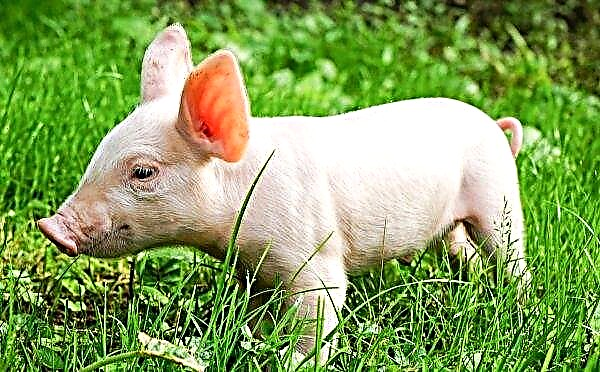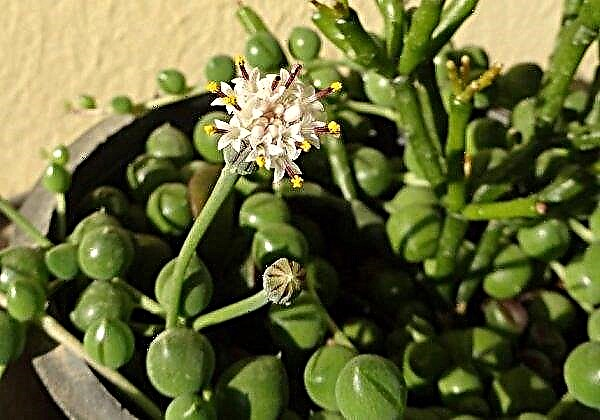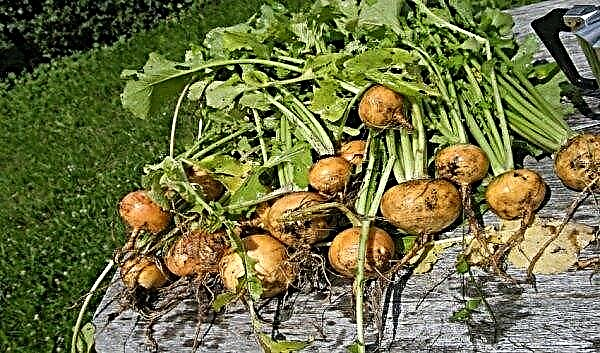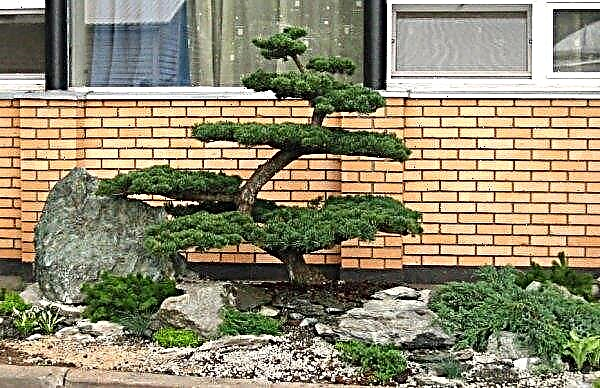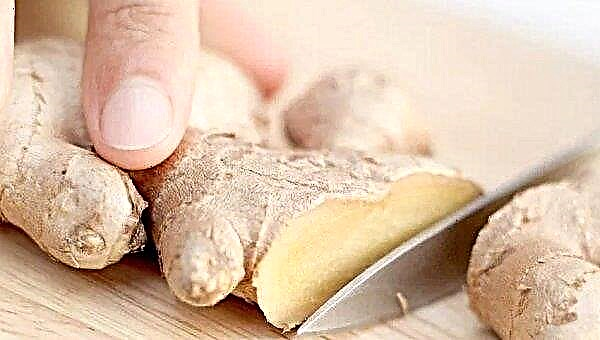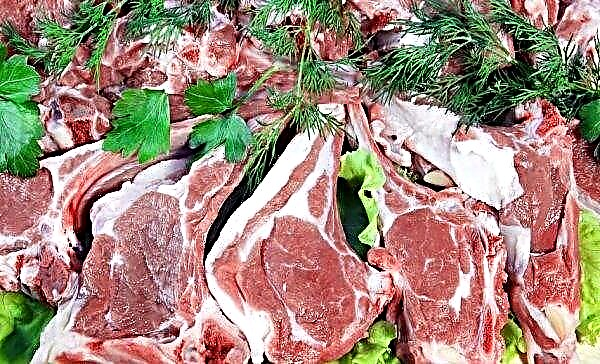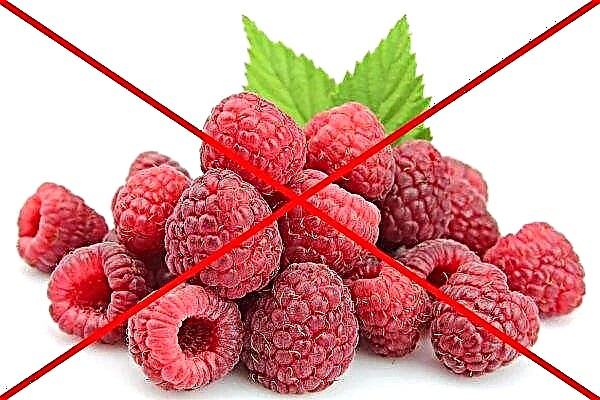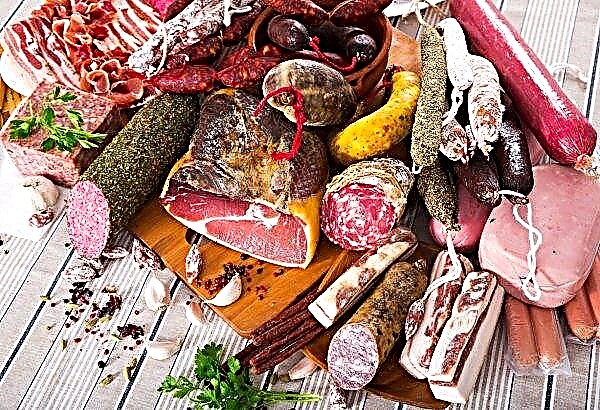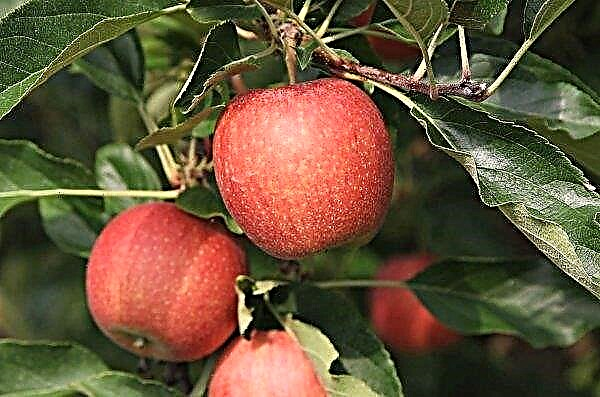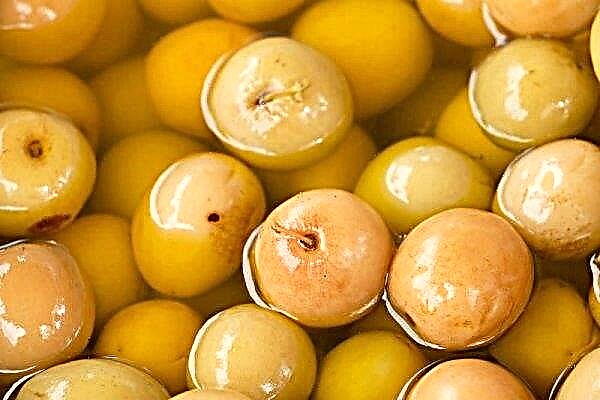Blackcurrant is one of the most beloved berries, many grow it on their own. Among large-fruited varieties, Ceres of Belarusian origin have good reviews. The article discusses its features and growing rules.
Grade description
Currant Ceres is given the following description:
- Ripening period is late.
- The growth and development of the bush occurs within 208 days.
- The size of the bush is medium, it does not grow to the sides.
- Branches are painted gray, without spines and villi.
- The leaves are painted green without a glossy gloss, large, serrated at the edges, slightly bent, composed of 5 blades.
- Fruit brush of medium size, short, curved axis.
- The flowers are painted in a light shade of pink.
- Belongs to self-fertile varieties.
- An additional pollinator for improving the quality and quantity of berries is Pavlinka variety.
- The berries are large, the color is black.
- Frost resistance is high.
- Resistance to powdery mildew and buds is good, to the spherical library and anthracnose - high.

Selection history
Since 1999, at the request of the RNPP of the Unitary Enterprise “Institute for Fruit Growing” (Belarus), the variety has been included in the State Register of selection achievements approved for use in the Russian Federation for cultivation in the North-West region. Five years earlier, in 1994, it was registered in the State Register of Varieties and Trees of Shrubs of the Republic of Belarus. Ceres is obtained from crossing Pavlinka and Pilot varieties Alexander Mamkin. The authors are A.G. Voluznev, N.A. Zazulina, G.P. Rainchikova, A.F. Radyuk.
Did you know? Currants are not grown only on 2 continents - in Australia and Antarctica.
Appearance, characteristics of berries
Berries Ceres have a round shape, attractive appearance, painted black. The medium density pulp is coated with the same quality peel. The taste of the pulp is sweet and sour, pleasant, tasters rated it at 4 points. The weight of 1 berry averages 1–1.2 g. After ripening do not crumble.
According to the authors, the yield of Ceres is 12–13 tons per 1 ha. As a result of measuring productivity during 1993-1998. the average yield was obtained at the level of 72 centners per 1 ha. Harvesting is due in August.

The chemical composition of black currant:
- vitamins: A, B1, B2, B4, B5, B6, B9, C, E, H, K, PP;
- macronutrients: potassium, calcium, silicon, magnesium, sodium, sulfur, phosphorus, chlorine;
- trace elements: aluminum, bromine, vanadium, iron, iodine, cobalt, lithium, manganese, copper, molybdenum, nickel, rubidium, selenium, strontium, fluorine, chromium, zinc, zirconium;
- omega-3 and omega-6 fatty acids;
- sugar 8.4%, acid 2.6%.
Important! 100 g of currant contains the amount of vitamin C in excess of 2.22 times the daily intake of an adult.
Energy value of 100 g of berries:
- calories: 44 kcal;
- proteins: 1 g;
- fats: 0.4 g;
- carbohydrates: 7.3 g.
Video: Ceres
Agricultural technology
To ensure good yield of blackcurrant, it is necessary to choose a suitable place for planting, in compliance with all requirements, watering and fertilizing, protection from pests and diseases, proper pruning and wintering conditions.
Advantages and disadvantages
- Ceres has the following advantages:
- high yields;
- large berries;
- pleasant taste;
- attractive appearance;
- self-fertility;
- the berries do not crumble;
- good frost resistance;
- resistance to certain diseases;
- suitable for transportation;
- universal application.
- The variety has such disadvantages:
- incomplete disease resistance;
- deterioration in yield without an additional pollinator;
- short shelf life of the crop.
Seat selection and landing
The landing site is chosen level, it is also permissible to arrange bushes on the south or southwest slope in the lower part. To protect the plants from the wind, on the sides at a distance of about 1 m there should be higher plants or walls of structures. Plant currants in the garden well. The site should be well lit, you can allow a small partial shade.
Ceres loves heavy loamy soils, although a light or medium composition may also work. The acidity level should be 5–6 pH. Groundwater should be further than 1.5 m from the surface of the soil. Ceres loves moisture. Vegetables are suitable as precursors on the site. It is better to plant currants in the fall - in October. For planting, you need to dig holes 50 × 40 cm, the distance between the holes should be at least 1.25 m. When planting in rows in between, you need to leave 2.5 m.
At the bottom of the hole pour 2-3 kg of peat mixed with manure in a ratio of 50:50. On 1 m² of planting, 20-30 g of superphosphate, 10 g of potassium salt are applied. If planting is carried out in the spring, the root tips of the seedlings must be cut and the damaged or dried roots removed.
Autumn planting is carried out without shortening the roots. To improve the survival rate, the roots can be coated with a mixture of clay and mullein. The seedling is lowered into the pit so that the root neck drops by 7-10 cm, it is covered with earth, compacted, poured 3-5 liters of water, and 3-5 cm of peat are poured.Did you know? Currants are related to gooseberries, peonies and money tree, they belong to the same order.
Video: Planting blackcurrant
Care
The soil around the bushes is watered 4 times with 10 liters of water per bush:
- in the spring after waking up;
- At the beginning of June;
- at the beginning of July;
- at the end of September.
In a dry year, more watering will be required. The soil around the bushes must be weeded regularly from weeds; siderata can be planted between the rows. In autumn and spring the earth is loosened. In spring, currants are fed: 10–15 g of ammonium nitrate per 1 m² are added, 15–20 g of organic top dressing. Superphosphate and potassium salt contribute 20 g once every 2 years. Potassium sulfate and wood ash can also be added.
Pest and Disease Control
For the variety, such diseases are dangerous:
In the latter case, the bushes should be completely uprooted and burned; in other cases, diseased branches are cut off, capturing a bit of the healthy part, and burned. To avoid damage, once a month the bushes are sprayed with Fitosporin, a solution of 3 tbsp. tablespoons of soda and 40 g of laundry soap in 10 liters of water. In autumn, plants are sprayed with a solution of 100 g of urea in 10 l of water, a 1% solution of Bordeaux liquid, and copper sulfate.Damage to black currant is caused by such insects:
- currant gall midge;
- gooseberry flint;
- sawflies;
- raspberry beetle;
- wandering willow scale insects;
- spider mite;
- currant glass;
- currant kidney moth;
- leaflets;
- currant berry sawfly;
- gall leaf aphid;
- currant narrow-bodied goldfish.
 To combat them, Fitoverm is used.
To combat them, Fitoverm is used.
Trimming and shaping a bush
The fruiting of Ceres has such features:
- Shoots aged 1 and 2 years give the largest berries.
- Shoots of 2 and 3 years give the largest number of berries.
- Fruiting on the branches of 4 and 5 years is minimal.
Important! Do not give the bush a standard shape, otherwise it will quickly grow old and will not yield a high yield.
Therefore, the bushes need shaping pruning:
- In 1 year, leave 3-4 branches, choosing the strongest.
- For 2 years, they cut 1–2 underdeveloped branches.
- At 3 and 4 years continue to trim 1-2 weak branches.
- For 5 years, all branches 4 years old are removed.
Improving pruning is carried out in the fall - old, sick, damaged branches are cut. In the spring, incorrectly growing, thickening branches that have not survived wintering are cut.
Wintering
Preparing Ceres for the winter includes:
- sanitary pruning;
- loosening, watering, top dressing, mulching;
- bending shoots in the direction of growth.
The soil around the bushes is loosened to a depth of 15–16 cm, and directly below them to a depth of 5–6 cm. If the plants grow poorly and produce little yield, 50–80 g of superphosphate and 20–40 g of potassium sulfate can be added. They can be replaced with a glass of wood ash diluted in water. So that the shoots do not straighten, there are 2-3 of them. crushed at the bottom with a stone or brick. It will cover the shoots with the fallen snow, and if there is none, shelter from spruce branches or agrofibre will be required.
Video: Preparing blackcurrant for winter
Harvesting and storage
The late-ripening variety Ceres is harvested in early August, choosing morning or evening hours. On farms, special machines can be used for cleaning, on household plots this is done manually. Weather on the day of cleaning should not be rainy. Large farms stack the berries in 10-12 kg boxes, the rest is suitable for trolleys, baskets, boxes, cardboard bags for dairy products with a capacity of up to 5 kg.
For storage, choose a place with a temperature of 0 ... + 3 ° C and a relative humidity of 85–90%. Berries taken for storage should not be wet, dirty, overripe or unripe, damaged, affected by pests or diseases. Under these conditions, berries can be stored for up to 3 days. To increase the shelf life, the berries can be dried or frozen.Variety Ceres is a large-fruited blackcurrant that can be grown both on personal plots and on large farms. She has a lot of advantages and almost no shortcomings. However, like other crops, the variety needs to follow the rules of agricultural technology.

